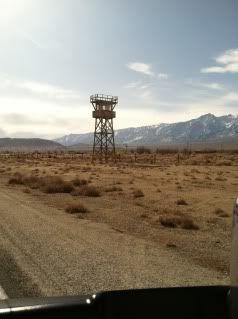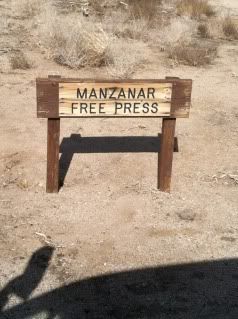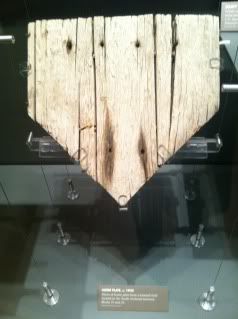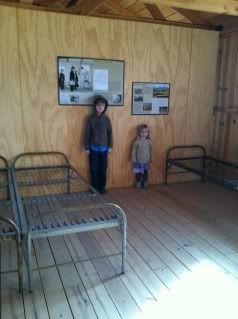
Anyone moderately familiar with American history knows that Franklin Roosevelt, in announcing war with Japan, described December 7, 1941, as "a date which will live in infamy." People are less familiar with another infamous date, also related to Roosevelt and Japan, and the subject of our most recent camping trip.
Seventy years ago today, February 19, 1942, just two months after the attack on Pearl Harbor, Roosevelt signed Executive Order 9066, which authorized the government to remove residents and citizens of Japanese descent from their homes on the west coast and imprison them indefinitely in internment camps. Ostensibly this was done to "protect" them from prejudice and retaliation, but in reality, this WAS prejudice and retaliation.
More than 100,000 residents, two-thirds of whom were citizens born in this country, were given mere days (if that) to sell their homes, businesses, and belongings, and to pack two suitcases to take with them to...somewhere. They were then placed in hastily and inadequately built camps as close as Southern California and as far as Arkansas. Due process was thrown out the window.
I had always been interested in the internment camps, and a couple months ago, after studying about Pearl Harbor, I introduced the topic to Elias. It's a hard subject to explain to a kid, but I had a couple children's books on the camps, which made it as approachable as possible for a 7-year-old.
A couple weeks later, when deciding where we should go on our next camping trip (Oliver's first!) I decided we should visit Manzanar, site of one of the internment camps, located in Middle of Nowhere, California.
We hadn't yet visited such a somber location as a family, but I felt it was important to see, especially while Elias was so interested.
So last weekend, we packed up and drove the five hours to Lone Pine, just a few miles from Manzanar. The drive was long and took us through landscape that can only be described as desolate. It was easy to imagine the bewilderment of Japanese-Americans trying to make sense of where they were being sent after having been forcibly removed from their homes.
Today, not much remains of Manzanar, yet it was an enriching, if sobering, experience. Manzanar is now designated as a national park. An auditorium built toward the end of the internment period now houses a modern, interactive, and informative museum. You can follow a driving tour of the grounds. A few structures remain, and some others (a guard tower and a couple barracks) have been recreated, but most of the former buildings' locations are marked with just a plaque. The government plans to eventually recreate more of the camp, but for now, it consists largely of overgrown brush. An obelisk in the cemetery area stands in honor of those who died in the camps.
If you live in or are visiting Southern California, Manzanar is definitely worth a trip. It's history that more people should know, and that we should never forget.
Here are some photos from our visit.
Site of the ironically-named camp newspaper:

Home plate:

Anna and Elias in a reconstructed barrack:


No comments:
Post a Comment